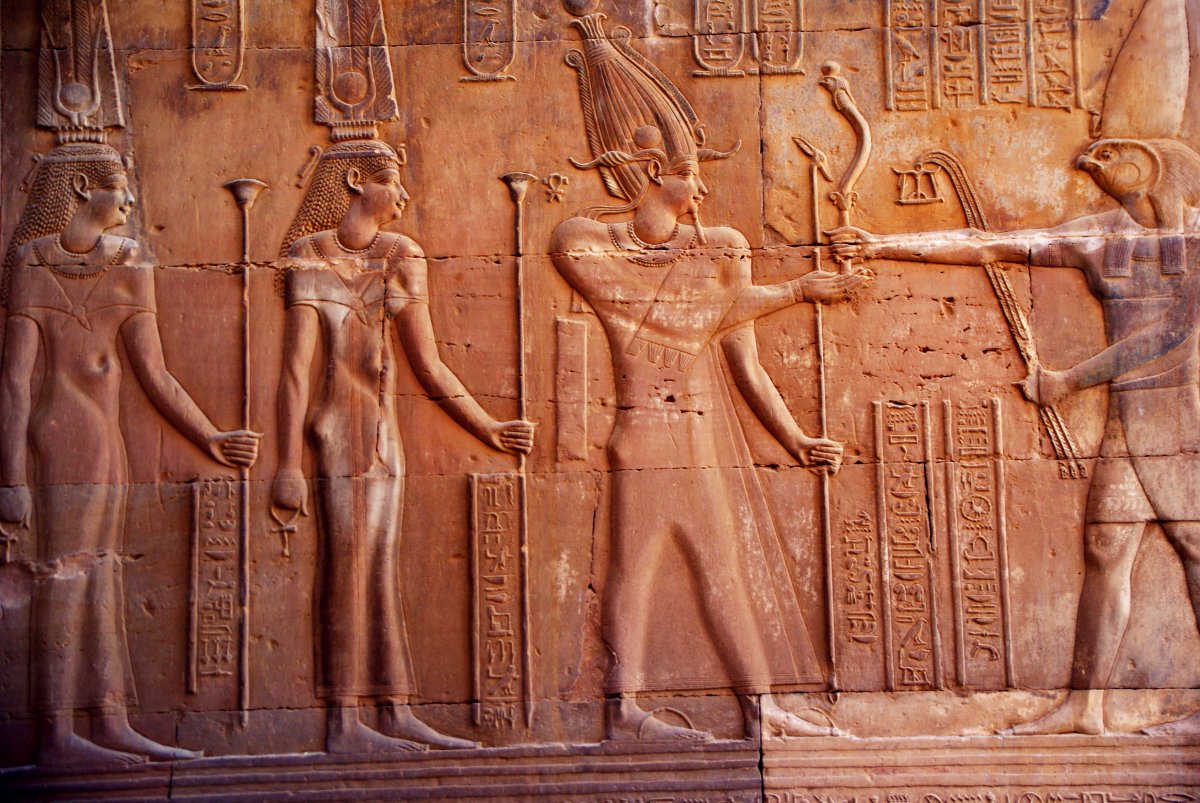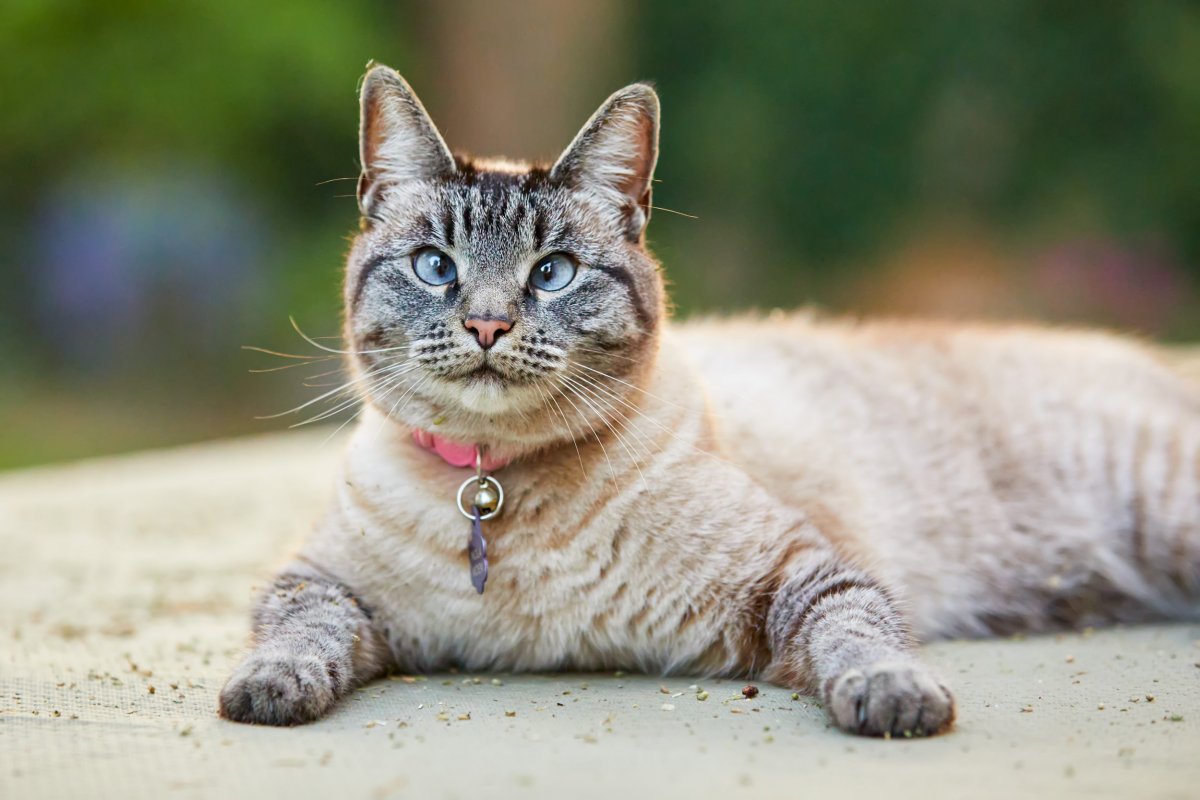Across the U.S. there are almost 60 million pet cats, with around one in four households having a feline companion. With their incredible agility—and apparent ability to avoid certain death on a semi-regular basis—the saying that cats have nine lives has resonated across societies and generations.
But where did this saying come from?
Cats started living alongside humans in the Near East during the Neolithic period, around 10,000 years ago. It is thought the departure from a hunter-gatherer lifestyle to a farming one was beneficial to these ancient cats. As humans farmed and stored food, they attracted common prey for cats, such as mice and rats. The relationship between human and cat became beneficial for both species—humans were providing food for the cats, and cats were stopping rodents from raiding human food stores.
Domestication sped up in Ancient Egypt. The civilization was known to worship cats, with several deities being depicted as having cat-shaped heads.
Pet cats were mummified and buried. One 2,500-year-old specimen scanned by French scientists in 2019 was found to be several different cats, with a textile ball in the place of the head. Earlier this year, researchers announced the discovery of what they believe to be the world's oldest pet cemetery, with nearly 600 cats and dogs at one single Ancient Egyptian site.
How long do cats live?
Studies show the average cat may only live to be 14 years old, which is the equivalent of age 70 in human years. Ageing in cats begins rapidly, but slows down as they get older.
Dr. Lucinda Alderton-Sell, Cats Protection's Field Veterinary Officer, previously told Newsweek: "Between the ages of 3 and 6, cats are in the prime of their lives and usually at their peak of physical fitness. This period covers age 24-40 in human years."
Alderton-Sell explained that as cats mature, from age 7-10, they start to slow down a bit and put on weight. When they reach old age, they need more rest and tend to live at a slower pace of life. If a cat makes it to 21, that would be like 100 years old in human terms.
How many lives do cats have?
It has been suggested that the idea of cats having nine lives has its roots in Ancient Egypt. The sun god Atum-Ra was said to take the form of a cat so he could visit the underworld. Atum-Ra was said to have given birth to eight other gods. As a result, some people have linked the saying of cats having nine lives with this myth—the eight gods, plus Atum-Ra, equal nine lives.

Anita Kelsey, U.K. feline behaviorist and author of Let's Talk About Cats, told Newsweek: "No one really knows for sure where that saying came from and we can only go on myths such as from ancient Egyptian times... As the Egyptians revered cats the myth of the saying originating there does sound feasible."
The Egyptians' obsession with cats is believed to have helped the species disperse around the globe, with felines traveling along trade routes into Europe and beyond.
And as they expanded across the world, so too did the myth of multiple lives.
In other countries and cultures, the number of lives a cat is said to have differs.
Arab countries tend to say that cats have six lives. In Spain and other Spanish speaking nations, cats are said to have seven lives. This is thought to relate to seven being considered a magical number related to good luck. With cats being some of the luckiest animals in terms of evading danger, assigning the species seven lives seems appropriate.
The number nine has significance to many early cultures. To the Ancient Greeks, it represented a magic number and is associated with the gods. For example, they believed it took nine days to fall from heaven to Earth. In Hinduism, nine is considered a complete and divine number. In China, nine is associated with the dragon, which is a symbol of power.
Cat behavior expert Celia Haddon told Newsweek: "Some numbers seem to have a special significance and perhaps this is why cats have nine, rather than 10 or eight, lives. In the Bible, nine was used 49 times and stands for completion. Christ died on the ninth hour of the day. Or maybe because it comes from the Welsh, where nine steps was used to measure legal distances. It crops up in a stitch in time saves nine."
The idea of nine lives may also have come from Shakespeare or traditional sayings.
An old English proverb of unknown origin directly references the idea of cats having nine lives. It says: "A cat has nine lives. For three he plays, for three he strays, and for the last three he stays."
William Shakespeare also references nine lives in his 1597 tragedy Romeo and Juliet, appearing in Act 3, Scene 1 during a fight between Tybalt and Mercutio.
Tybalt: What wouldst thou have with me?
Mercutio: Good King of Cats, I want to take one of your nine lives. I'll take one, and, depending on how you treat me after that, I might beat the other eight out of you too. Will you pull your sword out of its sheath? Hurry up, or I'll smack you on the ears with my sword before you have yours drawn.
Tybalt: "What wouldst thou have with me?"
— Shakespeare Magazine (@UKShakespeare) March 2, 2019
Mercutio: "Good king of cats, nothing but one of your nine
lives..."
Shakespeare – Romeo and Juliet
[Photography by @eMCT] pic.twitter.com/RqSSyd3mf1
Kelsey says the saying has endured because of our connection to felines: "We love cats and want them to be mystical and all powering. Plus, they get up to so much mischief we want the nine lives saying to be true!"
Do cats really cheat death?
In September, a viral video of a cat hanging off the roof of a football stadium in Miami went viral. The black and white cat was holding on with just one arm when it plunged around 30 feet, with crowds holding out an American flag in an effort to break its fall. Seconds later, a member of the crowd lifts up the cat and the whole stadium erupts in cheers.
@misterhurricane Falling #cat saved at #MiamiHurricanes football game at #HardRockStadium #9lives #catsoftiktok @Miami Hurricanes
♬ original sound - Roberto🌪
The video can also be seen here.
Stories about cats surviving huge falls are commonplace. One New York cat is known to have survived a fall of 32 stories. It suffered a chipped tooth and a collapsed lung and was sent home from the vet after two days.
They are able to come away from these perilous drops because of what is known as their "righting reflex." This is a balance reflex that allows them to orientate themselves as they fall in order to land on their feet. The righting reflex, along with their flexible bones and ligaments, is how they are able to survive falls from huge heights—heights that would prove fatal for most other mammalian species, cementing the old saying that cats have nine lives.
"Cats are curious by nature and many love exploring new situations and scenarios, some of which clearly are not good for them," Kelsey said. "But our cats are fearsome predators and survivors equipped physically with great tools such as the mid air reflex whereby they right themselves during a fall to land on all feet, their whiskers, which can determine whether a space is big enough for them or not and their ability to make themselves appear like liquid when they squeeze into small boxes or a tight space. The latter is due to them not having a tight collarbone. They are also extremely quick at being able to react when danger presents itself."
Haddon said: "Cats are small animals that can be preyed upon by bigger ones such as wolves, dogs, coyotes, large constrictor snakes, leopards etc. So they have evolved to be escape artists.
"They haven't lost their instincts to hunt—which means they can survive without human help. There are feral cats all over the world. Even a pet cat, if it gets lost from its home, has quite a good chance of managing to find food and shelter on the streets at least for a little while.
"And finally, they don't take abuse. Dogs can be hit and abused by cruel owners and will come back for more. Cats neither forgive nor forget. They will leave home if treated badly.
"All this adds up to an amazing survivorship."

Uncommon Knowledge
Newsweek is committed to challenging conventional wisdom and finding connections in the search for common ground.
Newsweek is committed to challenging conventional wisdom and finding connections in the search for common ground.
About the writer
Hannah Osborne is Nesweek's Science Editor, based in London, UK. Hannah joined Newsweek in 2017 from IBTimes UK. She is ... Read more
To read how Newsweek uses AI as a newsroom tool, Click here.








